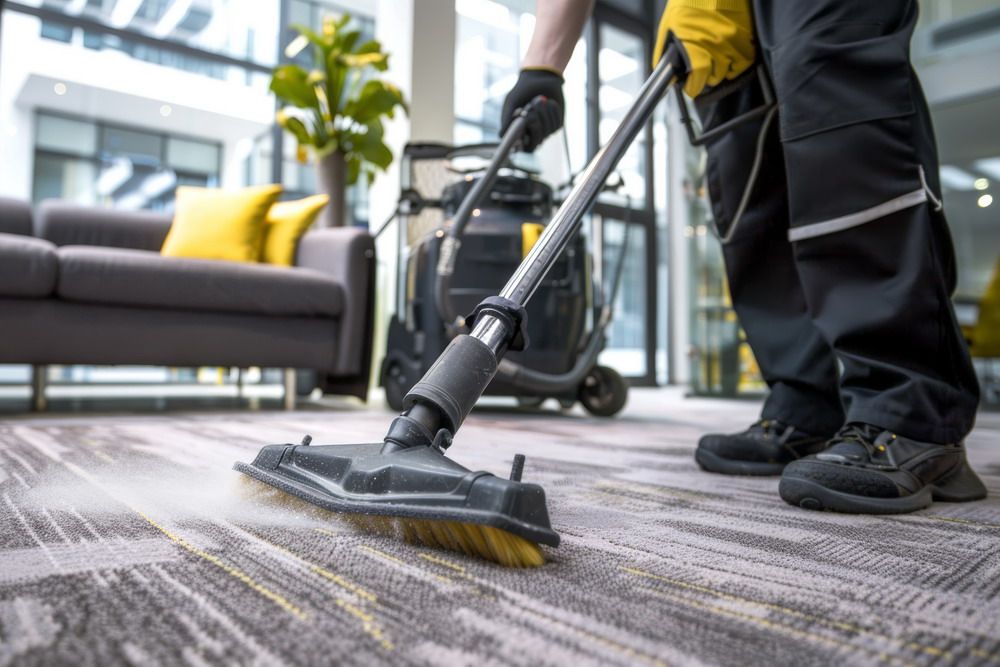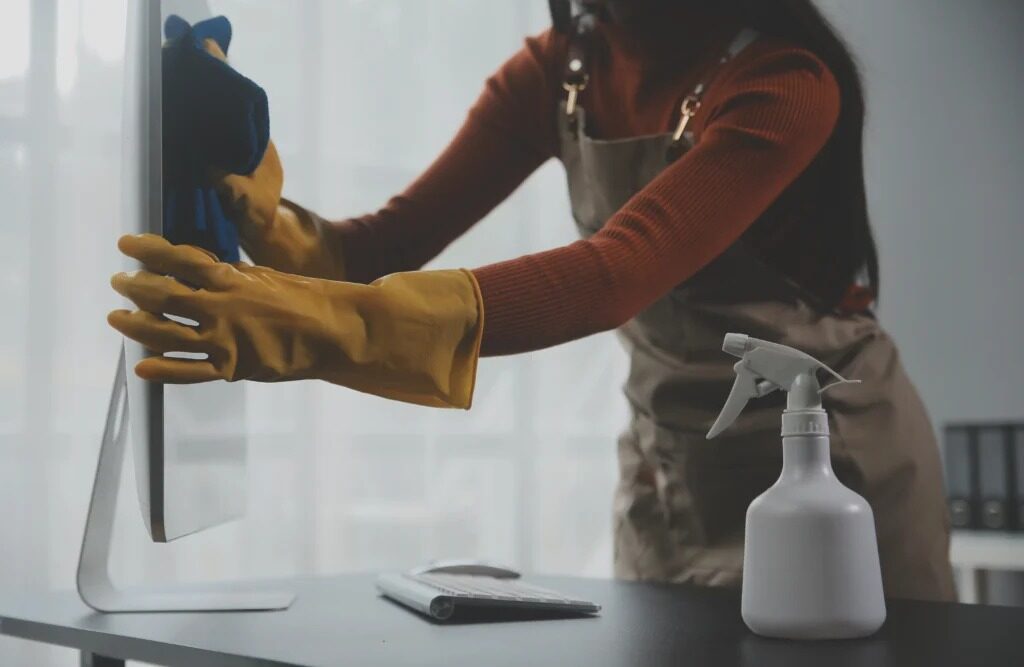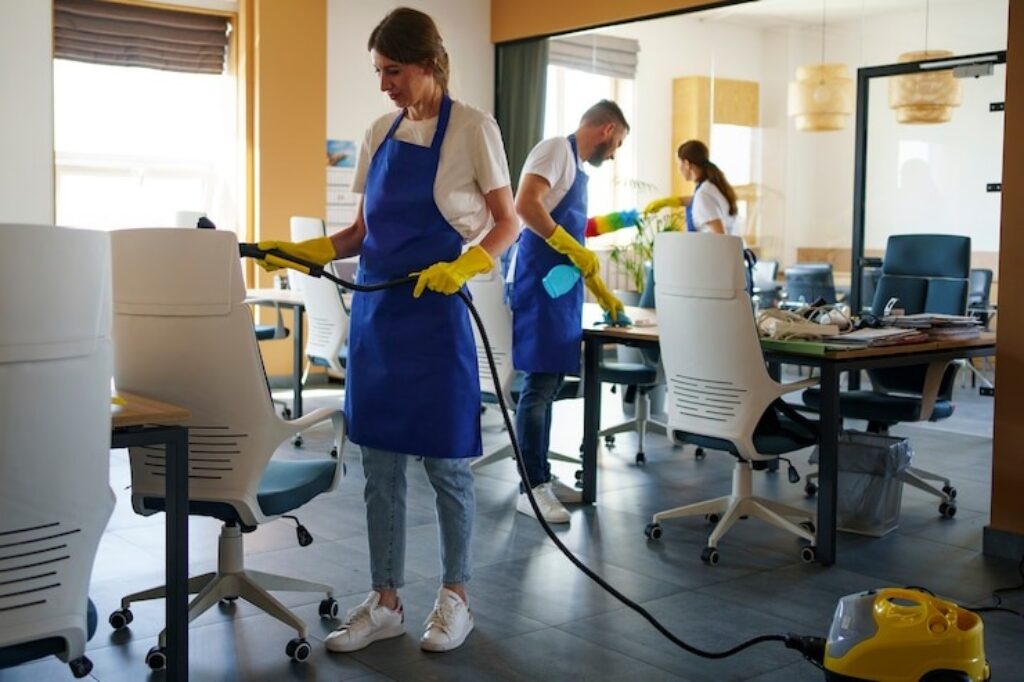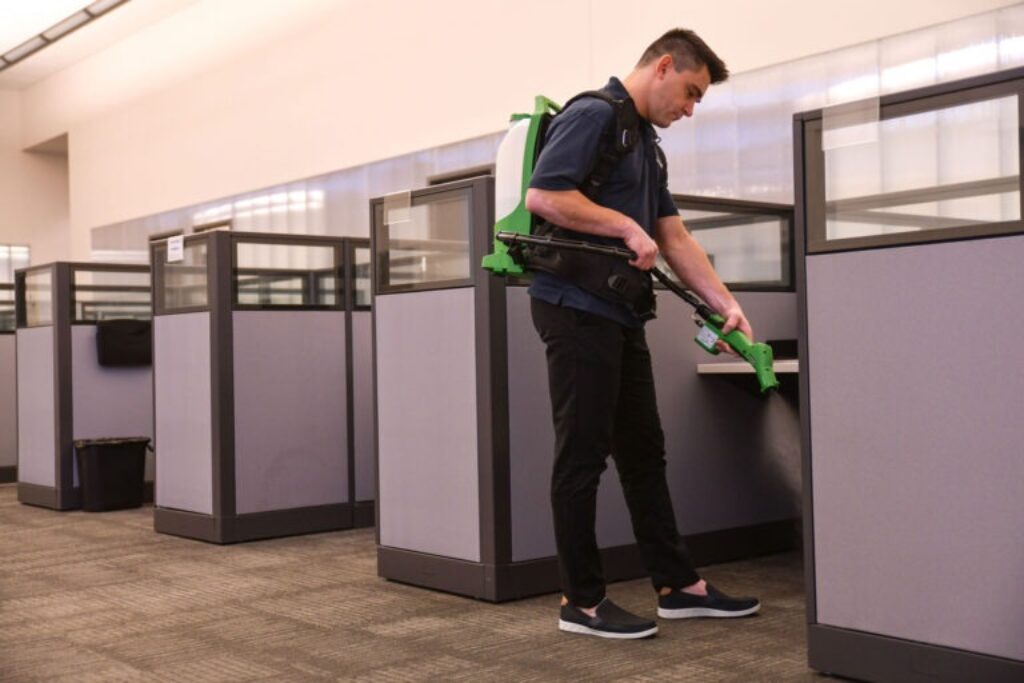
Smooth operations, healthy environments, and cost savings – these critical business outcomes depend on clean, orderly facilities. Yet tight budgets and capacity challenges mean many organizations struggle to properly maintain buildings and infrastructure.
Luckily, partnering with specialized industrial cleaning crews, like those from All Pro Cleaning Systems in Boston, provides affordable scaling, consistency, and compliance advancing operational efficiency.
Table of Contents
The True Cost of DIY Cleaning

Source: radiantcleaningnj.com
In tight fiscal conditions, cutting janitorial services seems sensible, but this turns out to be far more expensive long-term than outsourcing to an expert cleaning provider. Internal cleaning often uses general consumer products inadequate for industrial use.
Staff also lack specialized training and efficient processes tailored to large facilities.
In food plants, poor disinfection heightens the risk of germs like listeria and salmonella triggering mass product recalls or even shut downs.
Across sectors, neglecting professional cleaning services leads to far larger financial and operational burdens from safety issues, non-compliance fines, crisis cleaning expenditures when problems escalate, and more.
The Scalability Advantage
Even for organizations providing internal cleaning, relying solely on a small janitorial team proves vastly insufficient for today’s large, complex buildings.
A limited workforce lacks the ability to thoroughly clean hundreds of thousands or even millions of square feet daily across multiple locations meeting quality standards.
Industrial cleaning crews offer immense scalability to cost-effectively clean extensive areas.
They supply trained technicians by the dozen operating advanced auto-scrubbers, sweepers, pressure washers, and more.
Custom cleaning schedules distribute crews facility wide for systematic coverage of all surfaces and components.
Scaling expert labor and industrial equipment to actual need means industrial cleaning teams enable consistent, comprehensive cleaning unfeasible solely using internal janitorial staff.
Lean Methodology

Source: freepik.com
Industrial cleaning also introduces process refinements that enhance productivity and outcomes.
Purpose-built procedures eliminate wasted motions during transitions or room turnovers. Staff route optimization plans determine the precise cleaning sequence per area, minimizing unproductive downtime between tasks.
Streamlined protocols standardize methods and materials across teams and sites. Lean methodologies improve efficiency, resulting in cleaner and more efficiently run facilities.
It also lowers costs through reduced labor hours and cleaning agent usage. Continuous improvement programs then refine processes based on cleaning metrics and customer feedback.
Instead of just providing more people power, industrial cleaning crews leverage optimized workflows that yield better results in less time.
Compliance and Quality Assurance
Alongside efficiency, industrial cleaning also elevates safety and compliance.
Licensed crews properly handle restricted compounds meeting OSHA and EPA rules, unlike untrained internal staff. They integrate digitized management platforms tracking usage, inventory age, training certificates, and more critical for adherence.
Cleaning management plans customize procedures, equipment, solutions, and documentation for unique buildings yet ensure standardized quality assurance.
This prevents teams neglecting areas while enabling location customization.
Industrial cleaning staff focus solely on facilities maintenance competencies, unlike internal generalized custodians. This specialization better satisfies both compliance and quality than internal generalists.
The Cutting Edge of Clean

Source: buildingstars.com
Technology now further propels the precision, productivity and compliance capabilities of external cleaning crews.
Robotic floor scrubbers automatically scan shelf tags for responsive cleaning avoiding disruption. Handheld sensors monitor restroom sanitation levels that determine service frequencies.
Smart waste receptacles self-transport upon hitting capacity thresholds.
Embracing such emerging technologies unavailable to internal staff promises to drive even greater efficiency and oversight through outsourced crews.
Conclusion
Maintaining clean, compliant, optimally functioning facilities remains imperative for organizational success.
Yet relying solely on internal generalist custodians with consumer-grade products fails to meet modern challenges.
The scalability, systems, expertise, technologies, and methodologies of professional cleaning crews provide the most cost and operationally efficient way to maximize workplace cleanliness and compliance.
The essentiality of industrial cleaning for both finances and outcomes continues growing in today’s landscape.







